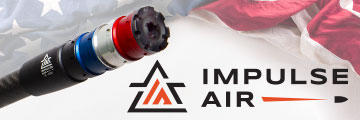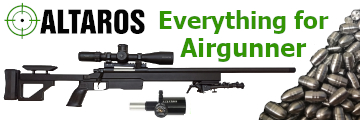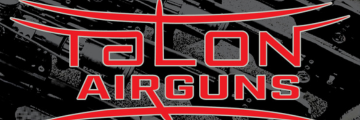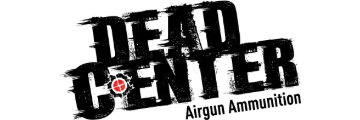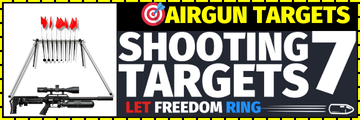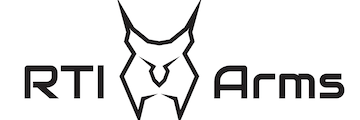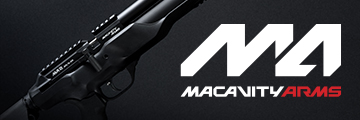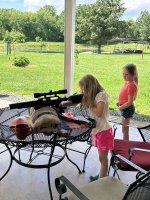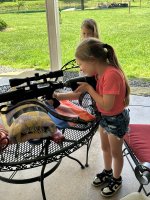This is not intended to be full blown review but more of an initial impression of Walthers new underlever called the LGU.
The rifle is only available in .177 at present, a refreshing change to see the smaller calibre available first.
The first thing to impress me was the packing, a sturdy card board box with double tucks & lids which opened out to reveal the rifle snuggly nestled in & supported by a purpose integral lining, well done Walther! The rifle inside is protected by a polythene sleeve, inside which, is a bag of silica to protect from moisture. There’s an Allen wrench in a separate plastic bag that is stapled to the box & a handbook. The handbook immediately gives the impression of quality as opposed to a lose piece of paper or a company leaflet detailing various products. So I’ve already got the impression Umarex/Walther have upped the anti!
IMAGE Upon removing the rifle from the packing it’s quite obvious on my example it hadn’t been polished prior to boxing as it was full of streaks & appeared rather dull. The second thing to come to mind was the statement Terry made yesterday in reply to one of my threads where he said he first read about the LGU at it’s conception, or something similar. My immediate reaction was why didn’t Terry see the HW97 & TX200? They must have been hidden under the table then!
Okay, it does strike you quite unashamedly this new LGU is very reminiscent of both the HW & AA offerings & I have to be honest I like the looks better than the other two. I always thought the LGV looked rather long & unwieldy, I have no idea if the LGU is shorter or not but it is more compact looking to me at 1064mm o/l.
The blueing is quite deep, in fact I have one of the first Webly Tomahawks to come out of Birmingham & serviced a Brummie Longbow yesterday, we all know how good the blueing is on those, well let me tell you the LGU would not be put to shame, Umarex, I’m impressed!
IMAGE The streaks are easily removed with a duster.
Putting the rifle to the shoulder it feels quite well balanced, the length of pull must be shorter than a 97/77 as I can reach the trigger quite easily but my middle finger knuckle is inclined to touch the rear of the trigger guard. I have small hands so people with hands like a pound of wet sausage may find the fit between the guard & pistol grip too close, it’s not likely to bruise you upon firing though like a shotgun would but it’s worth mentioning I thought.
IMAGE The vented rubber recoil pad feels nice, I’ve not scoped the rifle up obviously but the cheek piece does have a nice feel to it, if it’s high enough or too high I have yet to determine.
One part I do find unattractive is the two rubber “O” rings at the end of the cocking lever, it’s obvious why they are there & do do the job but also detract from the overall appearance of what really is to me quite a nice looking bit of kit.
IMAGE No stippling, checkering or any other sort of anti-slip on the fore-end for the supporting hand although there are scallops which I much prefer. There is a panel of checkering on the pistol grip outlined with a single line with the Walther logo underneath.
IMAGE.
The muzzle end plug can be removed & replaced with an adapter, sold as an optional extra ( RRP £9.95), for fitting of a ½” x 20 (1/2”UNF) silencer, Nice touch, I declined but for the hunters it’s there if you want it & won’t break the bank.
IMAGE Over to the Skan for a short chron test straight from the box.
The under lever is just held under tension from a ball bearing like the TX & is no harder to cock than most other comparable underlevers, you get the usual noise from the Anti Bear Trap Ratchet of which there are 3 notch’s in the compression tube. To close the underever you press the
ABT catch on the right hand side of the action & is the same as that on the TX. Upon closing the underlever it’s quite apparent the synthetic bearing on the front of the compression tube is in contact with the cylinder wall & the piston seal is quite tight, I could feel the drag quite markedly.
The barrel has a secondary “O” ring fitted.to help seal the breech as well as
one in the bottom of the compression tube . Neither are easy to see from the images.
The rear safety come on automatically during the cocking cycle & just pushes forward with the thumb in the same way as it does on the LGV. This is a feature I do like as opposed to the HW & TX system.
First shot over the chrono my instant reaction was very nice firing cycle & very similar to my FT tunes, a dull thud on firing, maybe a little more recoil & a slight ring a bit like you get on the 97 from the underlever. Open the breech to load the pellet for the next shot & I’m thinking I can smell diesling? No smoke, fire the shot & I can see something from the muzzle but it’s not smoke so I cock the rifle again holding the compression tube so I can see inside the central transfer port. What’s that, 2 “O” rings? A cup breech seal? Due to reflection I just couldn’t make it out so I insert a probe & one seal seemed to displace. Eventually I get to see properly, the “O” ring in the bottom of the compression tube had a complete ring of some sort of light clear liquid around it which I assume to be silicon oil?
I removed as much as I could using an absorbent tissue & continued shooting different makes of pellets over the chrono (Skan Pro MK3 Diamond)
RESULTS BELOW
Air arms 4.51 745fps LOW 723fps HIGH 754fps ave fpe 10.43
JSB 4.52 747FPS 732 747 10.46
AADEXP 4.52 771 769 773 10.35
H&NFTT 4.50 746 742 749 10.51
Superdome 750 746 753 10.28
Now don’t read too much into those figures, they are representative of 2 of the 3 rifle I have here so what you can expect I would think but there are lots of things to consider.
First most people associate dieseling, which both rifles did, with high power, well this is not always the case. Rifles running high compression ratios can & often do return much lower power because of dieseling. I’m not saying this is what’s happened here but it’s a consideration. IT'S WORTH MENTIONING WHEN I WAS TAKING PHOTO'S OF THE BREECH "O" RINGS OUTSIDE IN SUNLIGHT THE WIND WAS BLOWING SMOKE OUT OF THE BARREL INTO THE BREECH
Second the rifles are tight internally, too tight in my opinion, I would never consider trying to size the seal, I don’t & won’t size piston seals to cylinders on rifles but neither would I wait for these rifles to bed in, I just get the gut feeling from experience it will take many thousands of rounds.
Now the firing cycle, it’s pleasant enough out of the box however I feel the rifle is strangled, could be too small a transfer port, too weak a spring definitely too long in the stroke so can it be improved? Oh yes indeed! In fact don’t be surprised to see mine short stroked by Sunday.
So the trigger, two stage unit, first stage is so long I felt I was going to have my finger stuck up my nose before I got to the second stage. Let off was pleasant enough with minimal creep & I’m sure it could be made to most peoples liking as full instructions for adjustment is covered in the user manual.
IMAGE Well would I buy one doesn’t apply here, I already have so am I happy with my purchse……..YES! It's better out of the box than it's competitors, smooth, no twang, nice to shoot.
I have two TX200’s a new laminate HW77 so I think my initial assessment is fair especially as I’ve tuned many HW97’s in all calibres as well as numerous TX’s, 77’s etc.
I think it’s better looking than the HW97 & better than the TX out of the box so that says it all really, but I will spell it out, In my opinion Air Arms & Weihrauch get your finger out because this rifle is better than anything either of you have in production now!
I have nothing to do with Walther/Umarex or Armex, I have no hidden agenda or axe to grind. I purchased my own rifle from a retail outlet & the views I have given are my own alone & no others. I have told it how I see it & truly believe anyone who purchases a LGU will be getting a better rifle out of the box than it’s main competitors for less than £350.00.
Apologies for the poor images it's difficult to take them with rifle in one hand & camera in the other especially outside today.
































